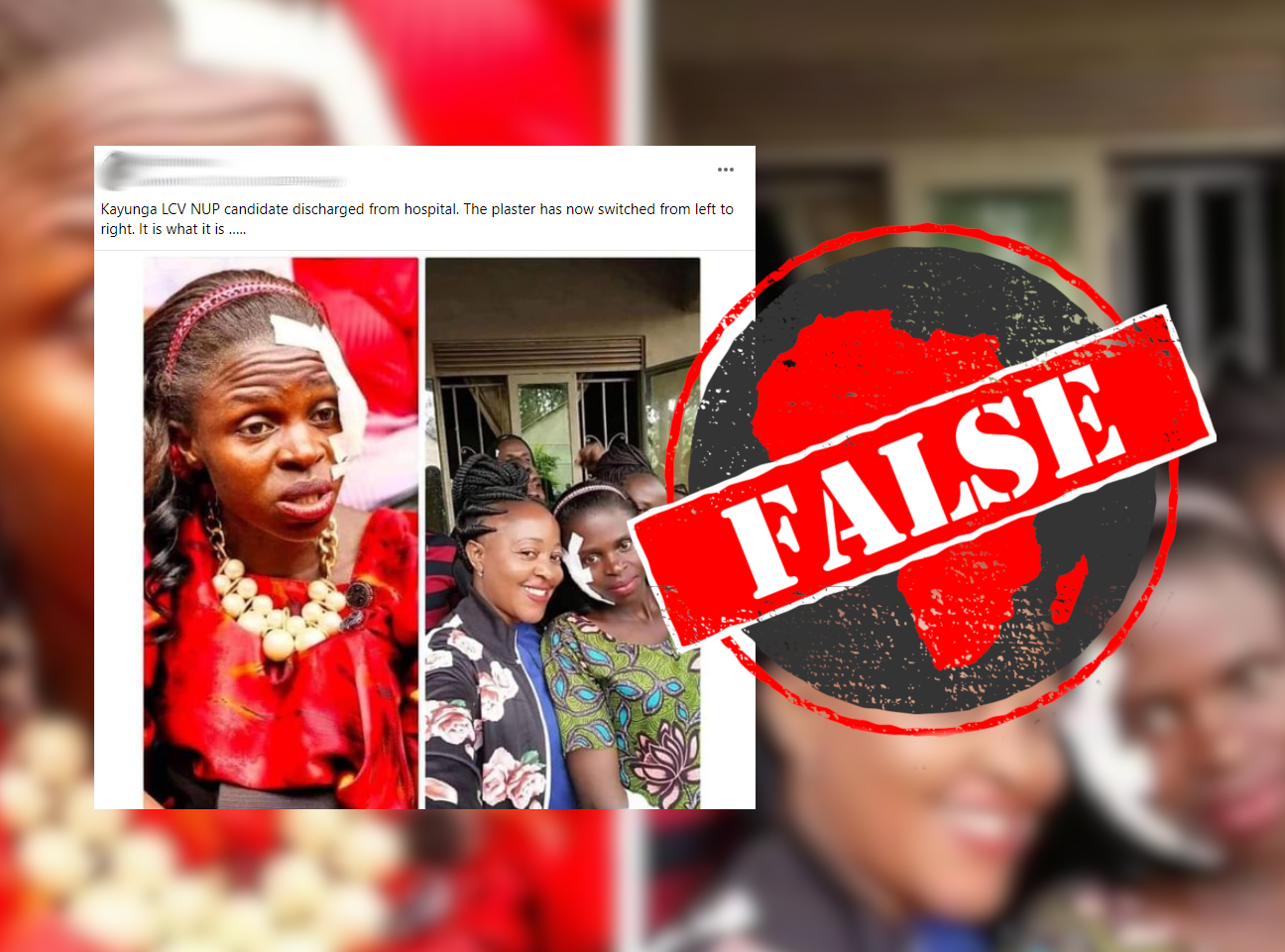On 14 December 2021, Ugandan police dispersed opposition supporters during by-election campaigns for the Kayunga district local council chairperson seat. Harriet Nakwedde, the opposition National Unity Platform (NUP) candidate, was caught in the melee. Her hand and the left side of her face were injured.
The next day, two photos appeared on Facebook and Twitter with the claim that the bandages on Nakwedde’s face had moved from left to right – evidence that her injuries were a sham.
“Kayunga LCV NUP candidate discharged from hospital. The plaster has now switched from left to right. It is what it is …” one caption reads. LCV stands for local council V.
The by-election was held on 16 December. Ruling National Resistance Movement (NRM) candidate Andrew Muwonge won with 31,830 votes to Nakwedde’s 31,308.
But do the photos really show that Nakwedde’s bandages swapped sides? We checked.

Photos confirm real injury
A Google search for news of the clash led us to a video by the established NTV Uganda TV channel, which shows Nakwedde with bandages on her left hand and the left side of her face. The video was uploaded on YouTube on 14 December, the day of the clash.
We also searched Nakwedde’s social media accounts. She posted two photos of her injuries on Twitter on 14 December, and more photos on Facebook the day after. In all the photos, the bandages are on the left side of her face.
They will do every thing to us,bt we are not giving up!My Kayunga people pliz keep strong.Lets show this Junta we are the Unusual Generetion. pic.twitter.com/sxApIwwnO4
— Hon Nakweede Harriet kafeero (@NakweedeHarriet) December 14, 2021
In a reply to a widely retweeted tweet claiming the switch, a user posted another photo showing the bandages on the left. Other photos on Nakwedde’s Facebook page, in which she is wearing the same dress as in the selfie photo, also show injuries on her left side. Later photos show a scar on her left cheek.
It appears the selfie photo was flipped.
Republish our content for free
For publishers: what to do if your post is rated false
A fact-checker has rated your Facebook or Instagram post as “false”, “altered”, “partly false” or “missing context”. This could have serious consequences. What do you do?
Click on our guide for the steps you should follow.
Publishers guideAfrica Check teams up with Facebook
Africa Check is a partner in Meta's third-party fact-checking programme to help stop the spread of false information on social media.
The content we rate as “false” will be downgraded on Facebook and Instagram. This means fewer people will see it.
You can also help identify false information on Facebook. This guide explains how.


Add new comment